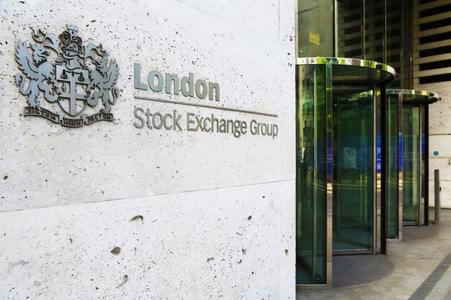Bonds & Loans speaks with Fernanda Rezende, Senior Director, Corporates at Fitch Ratings about how the ratings industry is evolving to meet the changing needs of borrowers and investors. 
Bonds & Loans: What in your view are some of the main drivers of borrowers becoming more cognisant of ESG-related risk?
Fernanda Rezende: In terms of the ethical and moral aspects of prioritising ESG, it is clear that these are very positive – for borrowers, investors, the wider market and society – which we do not opine on.. The investor community globally is becoming more focused on ESG, and asset owners are increasingly being asked to demonstrate how they score on environmental, social or governance-related factors. As investors integrate analysis of these factors in their investment process, borrowers will need to be in a position to address evolving investor requirements; or they will see the pool of investors dedicated to ESG-linked investing in their bonds start to decrease, with a potential liquidity impact.
We think the combined impact of these two trends will see more organisations in Brazil and elsewhere prioritising the improvement of ESG aspects.
Bonds & Loans: Do you think ESG prioritisation can become one avenue by which borrowers help channel more capital into emerging markets like Brazil?
Fernanda Rezende: This seems unlikely. ESG considerations are very entity and transaction-specific, so it will ultimately depend on the borrower. That being said, organisations or countries that are more transparent in general, or specifically with respect to ESG factors, tend to have a more attractive credit story when compared with other organisations that are behind on these practices; their forward-looking nature and prioritisation of sustainability is often directly related to their approach to other credit fundamentals, like cashflows.
In the medium-term, we’re likely to see more attractive assets – from an investment perspective – evolve out of higher prioritisation of ESG. Countries or organisations that don’t enforce prioritisation of ESG are increasingly likely to be disadvantaged in the long term.
Bonds & Loans: Ratings play an important role in the pricing of debt capital markets transactions. To what extent can markets really price ESG-related risk, especially once you start moving beyond carbon emissions climate risk or other features where science can be slightly more defining and start looking at risks more holistically? What role can ratings or rankings play here?
Fernanda Rezende: At this moment, we believe it is very difficult for the fixed income market to price this kind of risk. Part of the challenge, which is arguably more prevalent in emerging markets like Brazil, is that there is a poverty of high-quality information that can provide a suitable base to demonstrate borrowers’ track record on ESG factors. This information is starting to emerge, and will continue to emerge over time.
Fitch Ratings recently introduced an ESG relevance score, which we have been publishing since January this year. What we aim to do is provide a clear linkage between ESG factors and our own credit ratings and approach to measuring risk. We actually separated all of the factors linked to ESG and ran an exercise involving all of our international ratings, and tried to make clear how we incorporate those factors in the rating. Each factor is given a score of 1 to 5, and the higher relevance scores mean higher ESG-relevance – and therefore, a higher influence on the overall creditworthiness of that particular borrower, so how those risks could influence cash flows, for example.
Currently, these relevance scores add another dimension to the information available to investors, but they don’t yet provide a clear linkage between the credit and the price. That said, we are starting to produce data and research that helps to understand how ESG risk is incorporated in the traditional credit risk. We have a better understanding of how this data impacts ratings, but it will take a bit more time before we understand how these relevance scores influence pricing.
Bonds & Loans: Borrowers taking their first steps in this market often hunt for pricing advantages when looking to go green or issue ESG-linked notes, for example. Is there an argument in favour of looking at a borrower’s prioritisation of ESG as something that should command a premium from investors because of the additionality being created? And if so, to what extent can ratings help play a role in communicating that prioritisation or those organisations’ strengths?
Fernanda Rezende: If I look at our own analysis, what we predominately do is look at risk in a negative sense – so in a sense, we are analysing all the factors that could cause a drag on a company’s ability to generate sustainable cashflows. With ESG, this is no different: we expect corporates to be transparent, to provide a clear governance structure, to only engage ethically. They are negative by their nature, in the sense that we are looking more closely at the absence of characteristics.
But ESG factors can be negative as well as positive. If we look at the characteristics that we look at positively, there aren’t many – but a few stand out. For example, many pulp and paper companies in Brazil are typically viewed positively in their approach to energy sustainability because they tend to generate their own energy, often from sustainable sources and sell excess energy back to the grid. This has a direct positive influence on their cashflow sustainability and repayment capacity as a borrower, two major elements we focus on.
But, unless there is a very clear and proven link between cashflow performance and ESG factors, there is a risk for the industry – borrowers, investors, ratings companies and others –that we conflate or speculate on the benefits that companies could enjoy in prioritising improvement of those factors. If a company has outstanding governance structures and goes well beyond its peers in terms of sourcing all of its energy from renewable energy providers, for instance, the question for us is always: what is the impact of these factors on cashflow generation capacity or the company’s ability to repay. We are at the point where we have a better understanding of how the lack of prioritisation of ESG-related characteristics – strong corporate governance, for instance – impacts risk, rather than how the prioritisation of these factors enhances a borrower’s risk framework. For corporate governance, for instance, we don’t incorporate a mechanism that benefits the overall rating, per se, but we would penalise for things like the absence of a clear governance strategy, or a lack of audited financial statements, for instance. This is because our view of governance is often reflective of the minimum standard that is required among specific types of organisations in different geographies. As more information about the linkage between ESG and credit quality emerges, however, this could change.









